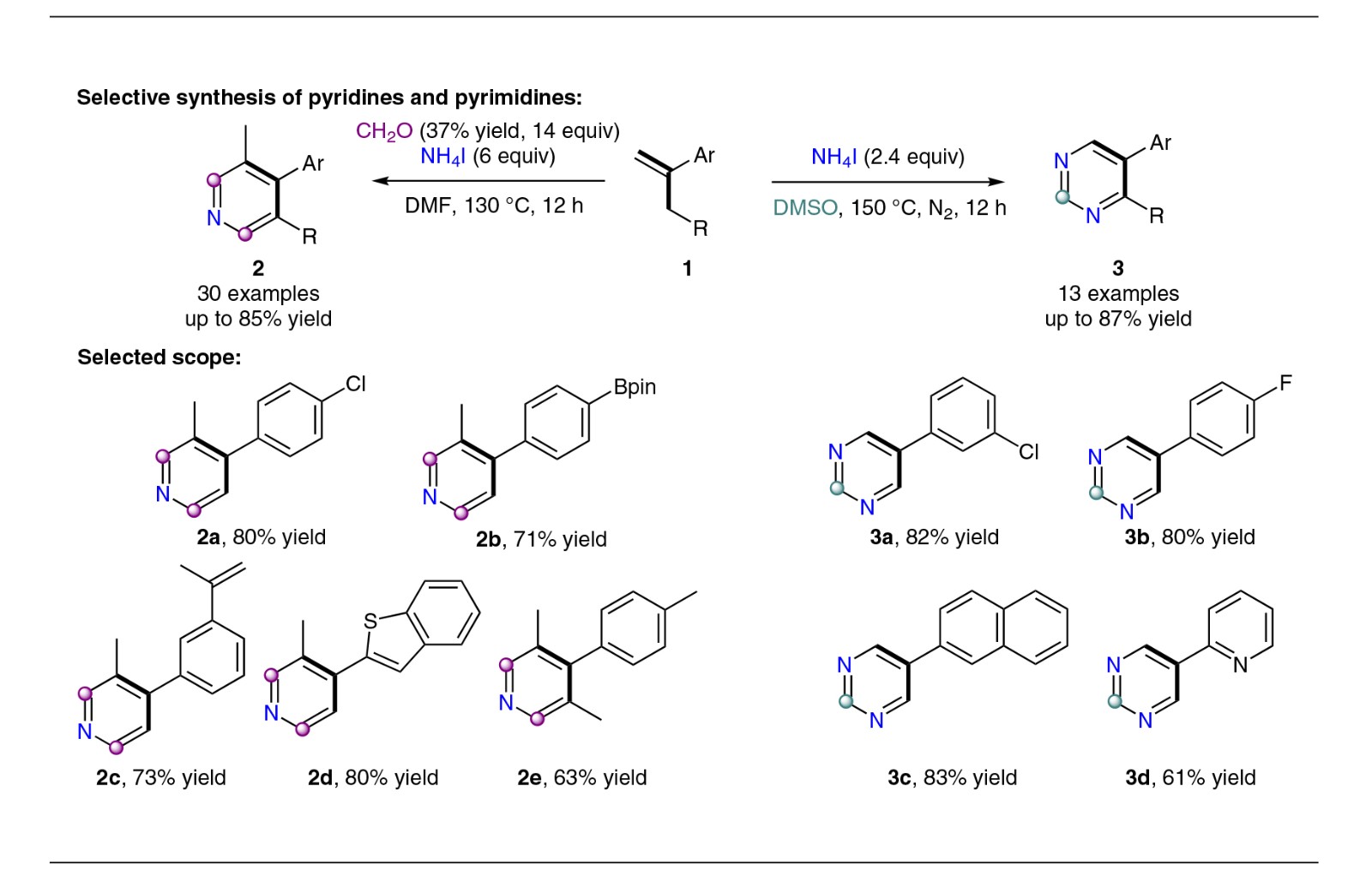
Synthesis of Heterocycles
Selective Synthesis of Pyridines and Pyrimidines Using Isopropene Derivatives
Contributor(s): Mark Reed, Dilan E. Polat (Paraza)
Li J, Li J, He R, Liu J, Liu Y, Chen L, Huang Y, Li Y.
Wuyi University, Jiangmen, P. R. of China
Org. Lett. 2022; 24: 1620-1625
DOI: 10.1021/acs.orglett.2c00124.
Key words
annulation - pyridines - pyrimidines - isopropenes - cascade reaction

Significance
Pyridine and pyrimidine are common scaffolds in pharmaceuticals, and easy and economical syntheses of these two cores are constantly in demand for increasing the complexity of bioactive molecules. Specifically, derivatizations at the 4-position of pyridine and the 5-position of pyrimidine remain challenging and usually involve transition-metal catalysts or expensive reagents and ligands. The authors have developed two annulation reactions for the construction of pyridine and pyrimidine rings from isopropene derivatives and ammonium iodide as a commercially available cheap source of nitrogen. The simple reaction conditions led to the synthesis of more than 40 examples of both cores, with excellent functional-group tolerance.
Comment
By using isopropene and an excess of formaldehyde and ammonium iodide, pyridines 2 bearing various functional groups, such as halogen (2a) or boronic ester (2b), were obtained in good to excellent yields. Moreover, the reaction tolerated the presence of a double bond on the aromatic group (2c) or a heterocycle (2d), providing good and excellent yields respectively. The authors also reported one example involving a substituted isopropene derivative with a good yield (2e). Additionally, when the reaction was performed in absence of formaldehyde in DMSO as the solvent, the annulation reaction led to the synthesis of pyrimidines 3. The annulation reaction was compatible with diverse functional groups, such as halo (3a and 3b) or 2-naphthyl (3c). In addition, the reaction was compatible with heterocyclic substrates, as illustrated by an example containing a pyridyl substituent (3d).
